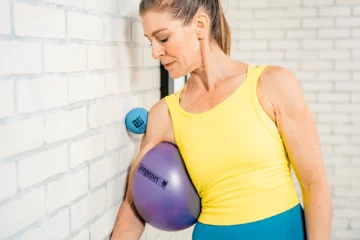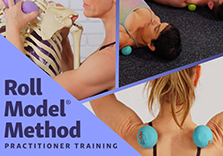
Sprains, fractures, carpal tunnel…wrists seem to get all the attention when it comes to any pain near the hand. And let’s face, it, with the exception of some arthritis or occasional soreness at the base of our thumbs, our hands serve us day in and day out, largely without complaint. Many muscles originating in the forearm contribute to our manual acuity, but the focus of this article is on three groups of muscles specifically within the hand to control movement in our thumbs and fingers.
Thenar Eminence is the regal name for the three muscles that that make that big mound at the base of the thumb on the palm side of the hand. Fortunately for us, the muscle names tell us what they do: the Abductor Pollicis Brevis is a short muscle that abducts the thumb away from the palm and moves it anteriorly, such as when we play the piano or type. The Flexor Pollicis Brevis, as you might guess, flexes toward the thumb toward the fingers and is critical in holding small objects between our thumb and fingertips (as when threading a needle). The Opponens Pollicis opposes the thumb, allowing its pad to touch the finger pads—it’s the clutch and throttle muscle for you motorcyclists.
The pinkie finger has a mirror (or mini-me) set of muscles to the thumb muscles in the Hypothenar Eminence. The Abductor Digiti Minimi abducts the pinkie finger and can be extraordinarily strong when the fingers are spread to grasp a large object like a basketball. The Flexor Digiti Minimi flexes the little finger at the metacarpophelangeal joint (where the finger protrudes from the web of the hand), while the Opponens Digiti Minimi rotates the pinkie toward the thumb, making a deep hollow in the hand when the pinkie and thumb pad touch. Next time you go rock-climbing, thank your pinkie muscles.
While the thumb and pinkie each get three intrinsic hand muscles to themselves, the index, middle and ring fingers share four muscles know collectively as the Central Compartment. The Adductor Pollicis by its name tells us it adducts the thumb, but owing to its span from the base of the middle finger to the base of the thumb in the palm, some categorize it as part of the Central Compartment. Say hello to it the next time you struggle to open a large jar. The Lumbricales may have you stumped. The name reflects neither a body part, nor an action, but a gardener’s best friend—the earthworm—because of the shape. The Lumbricales are long, cylindrical muscles in each finger that simultaneously extend the interphalangeal joints and flex the metacarpophalangeal joints. Cup your hands as if to drink water and you’ll see them. Lastly, the Palmar Interossei and Dorsal Interossei are muscles located along the inside edge of the fingers responsible for closing the fingers and thumb together toward the middle finger (palmar interossei) and spreading the fingers and thumb apart (dorsal interossei) as in when placing your hands on the mat in preparation for downward-facing-dog.
Unless we have fallen on our hands and injured them, these small muscles get paid very little attention. However, they too adhere to the use-it-or-lose-it philosophy and it is important that they stay strong and hydrated from the inside out lest they produce conditions that refer up the chain into our wrists, elbows and shoulders. So, after your next long day of typing, killer game of volleyball or rocking some arm balances, show your hands a little love such as can be found in the YTU 10 Minute Quick Fix for Hands, Wrists and Elbows video clip below (and maybe a manicure too!).
Heal your aching hands and wrists – Read the article.
Learn about our solutions for hand and wrist pain.
Watch our free 5 minute video for hand and wrist pain relief.











I love how you make understanding these muscles accessible and relatable with all of the real world applications…gave me several ‘aha’ moments. And you are right, the hands are so important. A bunch of my students are eager to do inversions and arm balances and I think this is a good primer to work with the hands.
I really enjoyed learning about the muscles of the hand and how they operate in a really easily understandable way so thank you for that. We spend so much time on our hands in yoga but never talk about them, or learn about them. They play such an important role in unburdening the wrists in weight bearing poses. I also work with rock climbers so I found this article particularly interesting in terms of how the pinky somewhat mirrors the thumb. I would love to understand more about the connections and interrelations between the muscles of the hands and the muscles of the wrists and forearms and really wish the 5 minute video link worked!
I have overlooked care of my hands for pretty much my entire existence, until roughly the last year as I have found it more difficult to open jars, to put my car in drive, and to handle small garden tools. I have especially started to notice when at spin class and have tried to alter my hand position due to the pain. The hands fall in my top three aging concerns (eyes, hands, feet) so it’s necessary for me to start paying regular attention. I will be watching the video as part of this post for sure, to help guide me on that journey.
I am amazed at how much trouble I have with separate movement of my pinky when it has three muscles all of its own and the middle three (where I have the most dexterity) are sharing one. They might be small muscles, but it sure does have a HUGE impact on your life when they are causing pain.
I have a client with pain i believe in her flexor capri ulnaris. Her pain is more on the pinki side and down. It hurts a lot when its supinated at the elbow joint. I had her take a YTU therapy ball and rub along that muscle. She said it immediatley had some release! She went home with her own set of YTU Therapy balls!
It’s refreshing to see attention on the smaller and more neglected muscles of our body. With so many asanas grounding and making contact through the hands, it makes sense to do this type of work in order to build awareness and strength. So often, we become aware of things only when they bother us or become injured. This is a simple way to reconnect to the outer digits and dial out on a more regular basis to increase reception.
Our poor hands are so neglected! Thanks for all the information on the hand’s muscles. While they seem small and get neglected I am acutely aware of all the work my hands do when I get a hand massage. Feels great! I also like to use my YTU balls on them.
Thanks for this technique. It helps me since I work on computer all day. B.
This piano finger exercise is ideal for folks who spend their entire day keyboarding and mousing around. I showed this video to my husband and he is going to share it with all of his computer programmer colleagues.
Thanks for this article and the great video exercise. As someone who is on the computer all day, but also spends time on the mat – it is helpful to build up strength in these “forgotten” muscles to avoid dreaded wrist pain that seems to come about from not properly utilizing my fingers!
Just like our toes, our fingers need attention – AND it feels so good for these neglected muscles. Thanks for this article, it brings attention to the fact that we need to move every part of the body every day. Everyone could do the exercises on the clip while sitting … even during bio breaks. I can still feel my fingers tingling as I type – it feels wonderful.
Thanks Christine for this wonderful article. Your way of description is so interesting. Of course the attention to the hands and wrists is so crucial to do safe adho mukha swanasana and various arm balancing yoga practices. The video clip that is attached to the article is very educative. I tried my hands along with Jill, but found it so difficult the first time. I believe those who teach chair yoga to seniors do need to especially incorporate these practices. I also believe that these type of exercises prevent from the dreaded Alzheimer disease as well, although it seems a remote connection.